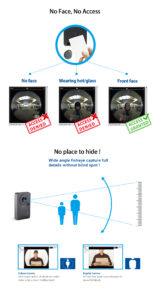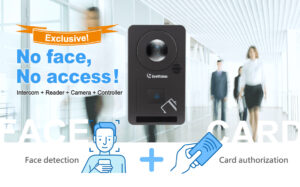
Several years ago, if you questioned most identity management professionals whether they imagined the use of biometrics for individual identification management would turn out to become mainstream for authentication security, a majority would have said that the technology could be used in some areas, but only few could have forecasted the tremendous scale and scope of some larger deployments developing all over the world.
The reason behind adopting biometric technology is because traditional authentication tactics like the once thought to be ubiquitous password/username are insufficient for personal identity simply because they can only provide evidence of ownership or proof of knowledge whereas biometrics provides unique advantages as it relies on identifying someone by “who they are” compared to “what you know “or “what you have.”
For those who have adopted or are considering adopting biometrics for identification, the most recent pre-deployment question due in part to the evolution of the industry is whether to deploy a unimodal or multimodal biometric system. Multimodal biometric systems have become the best suited solution for any industry where high accuracy and security is required because they require two biometric credentials for positive identification instead of one in a unimodal system. Based on our own research, we have concluded that multimodal biometric systems have more advantages over unimodal biometric systems or traditional authentication systems.
Here are the top 5 reasons that organizations may consider deploying multimodal biometrics:

1. Accuracy: Multimodal biometrics uses information from two or more biometrics – (e.g. fingerprint and finger vein pattern; or fingerprint and iris and voice) whereas unimodal biometric systems use information from one biometric – (e.g. fingerprint, iris, palm, signature, voice, hand shape, or face). The accuracy of a multimodal biometrics system is normally calculated in terms of image acquisition errors and matching errors. Image acquisition errors consist of failure-to-acquire (FTA) and failure-to-enroll (FTE) rate whereas matching errors comprise false non-match rates (FNMR) in which a legitimate person is rejected and a false match rate (FMR) where an impostor is granted access. Multimodal biometric systems have almost zero FTE, FMR & FTA rates because in this system, each and every subsystem has a viewpoint or a determination on the user’s claim. The examiner module utilizes various fusion strategies in order to combine each single subsystem decision or opinion and then come up with a conclusion. This is the reason that multimodal biometrics are more accurate than unimodal or any other authentication system.
2. Increased and Reliable Recognition: A multimodal biometric system permits a greater level of assurance for an accurate match in verification as well as identification modes. As multimodal biometric systems utilize multiple biometric traits, each single trait can offer additional evidence about the authenticity of any identity claim. For example, the patterns of movements (gaits) of two individuals of the same family or coincidentally of two different persons can be similar. In this particular circumstance, a unimodal biometric system based only on gait pattern analysis might lead to a false recognition. If the same biometric system additionally includes fingerprint matching or finger vein matching, the system would certainly results in increased recognition rate, as it is nearly impossible that two different individuals have same gait as well as fingerprint/finger vein pattern.

3. Enhanced Security: Another advantage of a multimodal biometric system is that by making use of multiple methods of identification, a system can preserve higher threshold recognition settings and a system administrator can make a decision on the level of security that is needed. For an extremely high security site/area, you might need to use up to three biometric identifiers and for a lower security site/area, you could possibly require one or two credentials. If one of the identifiers fails for any unknown reason, your system can still utilize another one or two of them in order to provide the accurate identification of a person. In this way, it significantly reduces the probability of admitting an imposter.
4. Vulnerability: Spoofing is the biggest threat to authentication systems. Multimodal as well as unimodal biometric systems are sometimes vulnerable to spoofing. Spoofing happens whenever an unauthorized person has the capacity to masquerade as an authorized user. The potential threats due to fake or artificial fingers were evaluated by another research team and the experiment exhibited that artificial fingers cloned with plastic molds could possibly enroll in the 11 tested fingerprint systems and were being accepted in the verification procedures with the probability of 68-100%, depending on the system. In this scenario, alternative hardware devices that rely on simultaneous multimodal authentication such as a biometric smart fingerprint/finger vein reader with liveness detection can eliminate spoofing. “Liveness” describes the capability of a multimodal biometric system to distinguish between a living and a fake sample and is generally done by measuring biometric features like humidity, pulse, blood flow, temperature, etc.
5. User Acceptance: As multimodal biometric systems are more accurate, reliable, have larger security options, and have the ability to avoid spoofing attacks, these systems are more widely accepted in many countries that cover large to larger deployments. Biometric deployments that encompass large scale population databases are turning to multimodal systems. However, in deployments where security and accuracy are paramount, no matter how small, multimodal systems have become ubiquitous.

Conclusion
The inadequate accuracy and reliability of traditional authentication and unimodal biometric systems has lead many end users to utilize multimodal biometric systems in order to provide the maximum level of accurate authentication. One thing we need to mention here is that privacy is a vital aspect of any multimodal biometric system deployment. The design of the multimodal biometric system must ensure that it does not threaten personal or informational privacy. Personal information should be collected only under specific conditions and for specific reasons and only be used for the purpose it was collected.
Multimodal biometric systems are a must in those industries where the ultimate security and accuracy is required, and where a simple mistake can lead death to many civilians or can cause great havoc to their normal life. A multimodal biometric system is best suited for industries such as healthcare, civil ID (eID/national ID), and Financial industries. Many developed countries like United States, Japan, United Kingdom, France, Germany, and Canada already deployed multimodal biometric system for voter registration, national id, national healthcare or ePassport projects. Developing and under developed countries are also taking the lead from developed countries and deploying multimodal biometric systems.
Source: M2SYS Blog



































































